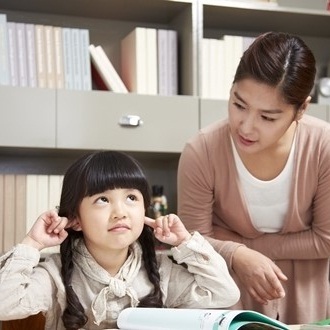小学英语语法知识七-一般现在时
小微 小学生微试题
一般现在时
肯定句:主语+do,
主语第三人称单数+ does
否定句:主语+don't+do
主语第三人称单数+doesn't+do
疑问句:Do+主语+do?
Does+主语第三人称单数+do?
usually, sometimes, often, seldom, never, every day
A. 第三人称单数形式的构成
一般现在时主语是第三人称单数时,谓语动词后要加s或es,其变化规则与名词变复数的方法大体相同:
1. 一般情况下只在动词后加s,如work—works, write—writes.
2. 以o,s, x, sh, ch结尾的动词,后加es,如guess—guesses, mix—mixes,
finish—finishes, catch—catches.
3. 以辅音字母加y结尾的动词,改y为i加es,如study—studies.
注:不规则变化的有have—has
<!-- /* Font Definitions */ @font-face {font-family:宋体; panose-1:2 1 6 0 3 1 1 1 1 1; mso-font-alt:SimSun; mso-font-charset:134; mso-generic-font-family:auto; mso-font-pitch:variable; mso-font-signature:3 135135232 16 0 262145 0;} @font-face {font-family:"\@宋体"; panose-1:2 1 6 0 3 1 1 1 1 1; mso-font-charset:134; mso-generic-font-family:auto; mso-font-pitch:variable; mso-font-signature:3 135135232 16 0 262145 0;} /* Style Definitions */ p.MsoNormal, li.MsoNormal, div.MsoNormal {mso-style-parent:""; margin:0cm; margin-bottom:.0001pt; text-align:justify; text-justify:inter-ideograph; mso-pagination:none; font-size:10.5pt; mso-bidi-font-size:12.0pt; font-family:"Times New Roman"; mso-fareast-font-family:宋体; mso-font-kerning:1.0pt;} p {mso-margin-top-alt:auto; margin-right:0cm; mso-margin-bottom-alt:auto; margin-left:0cm; mso-pagination:widow-orphan; font-size:12.0pt; font-family:宋体; mso-bidi-font-family:宋体;} /* Page Definitions */ @page {mso-page-border-surround-header:no; mso-page-border-surround-footer:no;} @page Section1 {size:612.0pt 792.0pt; margin:72.0pt 90.0pt 72.0pt 90.0pt; mso-header-margin:36.0pt; mso-footer-margin:36.0pt; mso-paper-source:0;} div.Section1 {page:Section1;} -->
英文字母大写情况总汇
同学们都知道,英文字母有大写和小写两种形式。但你们知道什么情况下使用大写字母吗?Let's go and have a look!
1. 英语句子开头的第一个单词的首字母要大写。
实例:How are you? 你好吗?
This is a book.这是一本书。
2. 姓名中的姓和名的首字母都要大写。
实例:Ann Read安·里德, Zhou Hua周华
3. 表示称呼语或职务的词首字母要大写。
实例:Mr Green格林先生, Dr Li李博士
4. 地名、语言名、某国人等词的首字母应大写。
实例:England英国, Beijing北京, English英语, Chinese汉语、中国人
5. 表示编号的词要大写。
实例: Lesson Two第二课 Row 3第三排
6. 星期、月份、节日名称也应大写。
实例:Sunday星期日, September九月, Teachers' Day教师节
7. 大多数的缩略词要大写。
实例:CCTV(中国中央电视台), ID(身份证), CD(光盘)
8. "I"和"OK"在句中的任何位置都应大写。
实例:Tom and I are students. 汤姆和我是学生。
That's OK.不用谢。
9. 文章的标题、书名、报刊名称等,第一个单词和每一个实词的首字母都要大写。
更多文章
106个愁死人的多音字,果断为孩子收藏
家长必读|不对孩子发脾气的小绝招
决定孩子成功最重要的因素是什么?

小微 小学生微试题
一般现在时
肯定句:主语+do,
主语第三人称单数+ does
否定句:主语+don't+do
主语第三人称单数+doesn't+do
疑问句:Do+主语+do?
Does+主语第三人称单数+do?
usually, sometimes, often, seldom, never, every day
A. 第三人称单数形式的构成
一般现在时主语是第三人称单数时,谓语动词后要加s或es,其变化规则与名词变复数的方法大体相同:
1. 一般情况下只在动词后加s,如work—works, write—writes.
2. 以o,s, x, sh, ch结尾的动词,后加es,如guess—guesses, mix—mixes,
finish—finishes, catch—catches.
3. 以辅音字母加y结尾的动词,改y为i加es,如study—studies.
注:不规则变化的有have—has
<!-- /* Font Definitions */ @font-face {font-family:宋体; panose-1:2 1 6 0 3 1 1 1 1 1; mso-font-alt:SimSun; mso-font-charset:134; mso-generic-font-family:auto; mso-font-pitch:variable; mso-font-signature:3 135135232 16 0 262145 0;} @font-face {font-family:"\@宋体"; panose-1:2 1 6 0 3 1 1 1 1 1; mso-font-charset:134; mso-generic-font-family:auto; mso-font-pitch:variable; mso-font-signature:3 135135232 16 0 262145 0;} /* Style Definitions */ p.MsoNormal, li.MsoNormal, div.MsoNormal {mso-style-parent:""; margin:0cm; margin-bottom:.0001pt; text-align:justify; text-justify:inter-ideograph; mso-pagination:none; font-size:10.5pt; mso-bidi-font-size:12.0pt; font-family:"Times New Roman"; mso-fareast-font-family:宋体; mso-font-kerning:1.0pt;} p {mso-margin-top-alt:auto; margin-right:0cm; mso-margin-bottom-alt:auto; margin-left:0cm; mso-pagination:widow-orphan; font-size:12.0pt; font-family:宋体; mso-bidi-font-family:宋体;} /* Page Definitions */ @page {mso-page-border-surround-header:no; mso-page-border-surround-footer:no;} @page Section1 {size:612.0pt 792.0pt; margin:72.0pt 90.0pt 72.0pt 90.0pt; mso-header-margin:36.0pt; mso-footer-margin:36.0pt; mso-paper-source:0;} div.Section1 {page:Section1;} -->
英文字母大写情况总汇
同学们都知道,英文字母有大写和小写两种形式。但你们知道什么情况下使用大写字母吗?Let's go and have a look!
1. 英语句子开头的第一个单词的首字母要大写。
实例:How are you? 你好吗?
This is a book.这是一本书。
2. 姓名中的姓和名的首字母都要大写。
实例:Ann Read安·里德, Zhou Hua周华
3. 表示称呼语或职务的词首字母要大写。
实例:Mr Green格林先生, Dr Li李博士
4. 地名、语言名、某国人等词的首字母应大写。
实例:England英国, Beijing北京, English英语, Chinese汉语、中国人
5. 表示编号的词要大写。
实例: Lesson Two第二课 Row 3第三排
6. 星期、月份、节日名称也应大写。
实例:Sunday星期日, September九月, Teachers' Day教师节
7. 大多数的缩略词要大写。
实例:CCTV(中国中央电视台), ID(身份证), CD(光盘)
8. "I"和"OK"在句中的任何位置都应大写。
实例:Tom and I are students. 汤姆和我是学生。
That's OK.不用谢。
9. 文章的标题、书名、报刊名称等,第一个单词和每一个实词的首字母都要大写。
更多文章
106个愁死人的多音字,果断为孩子收藏
家长必读|不对孩子发脾气的小绝招
决定孩子成功最重要的因素是什么?

